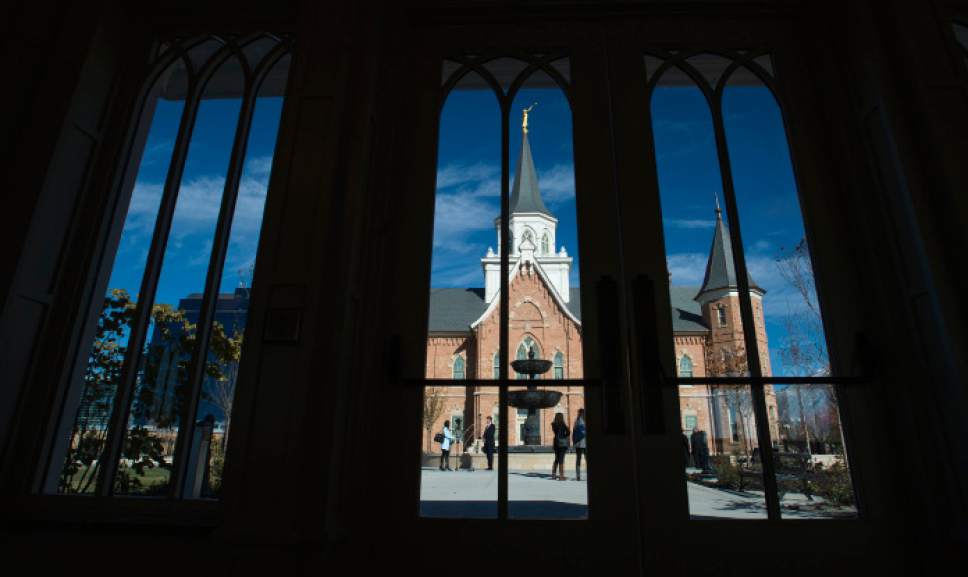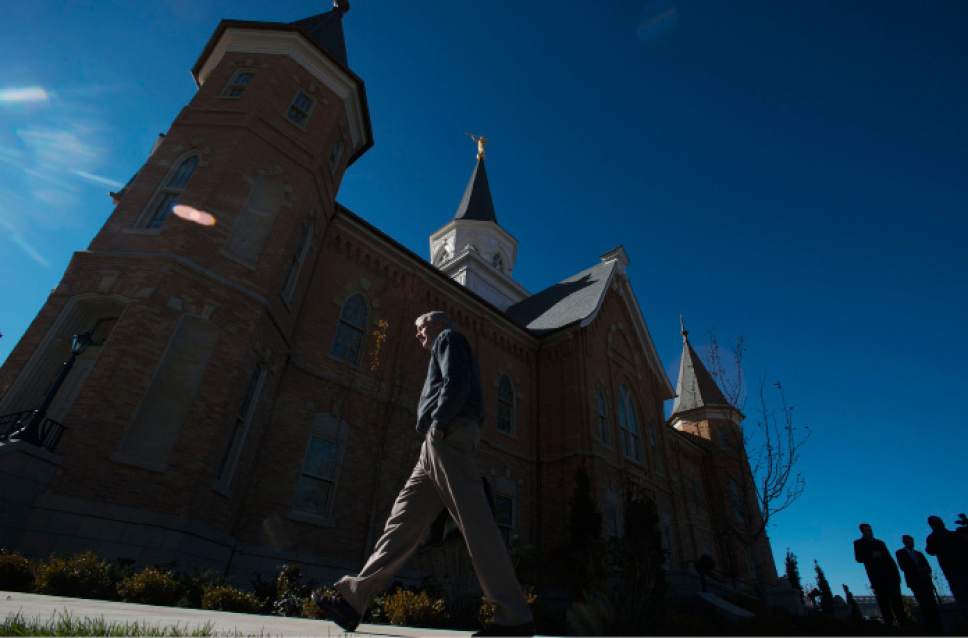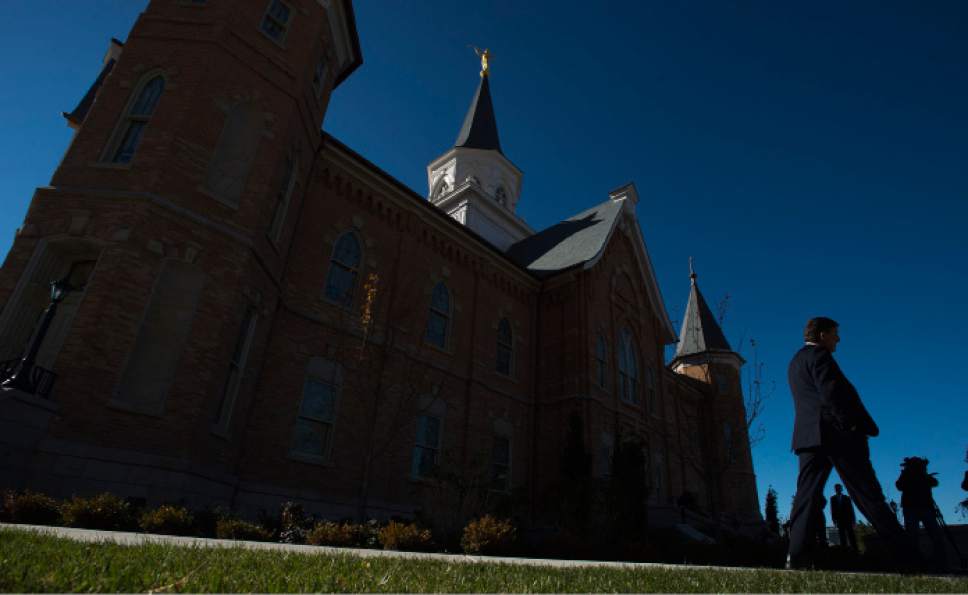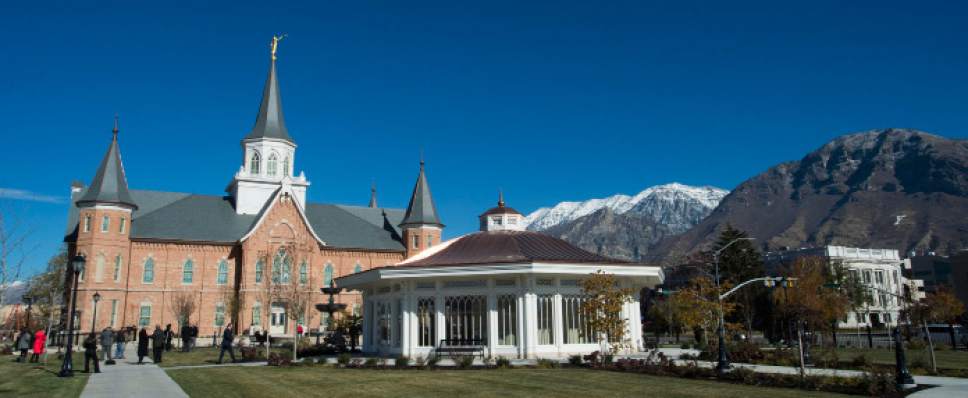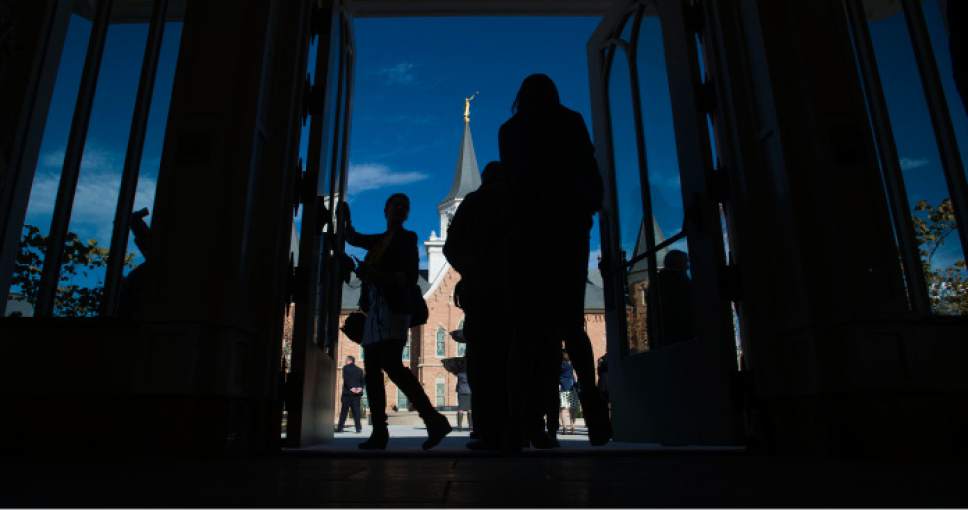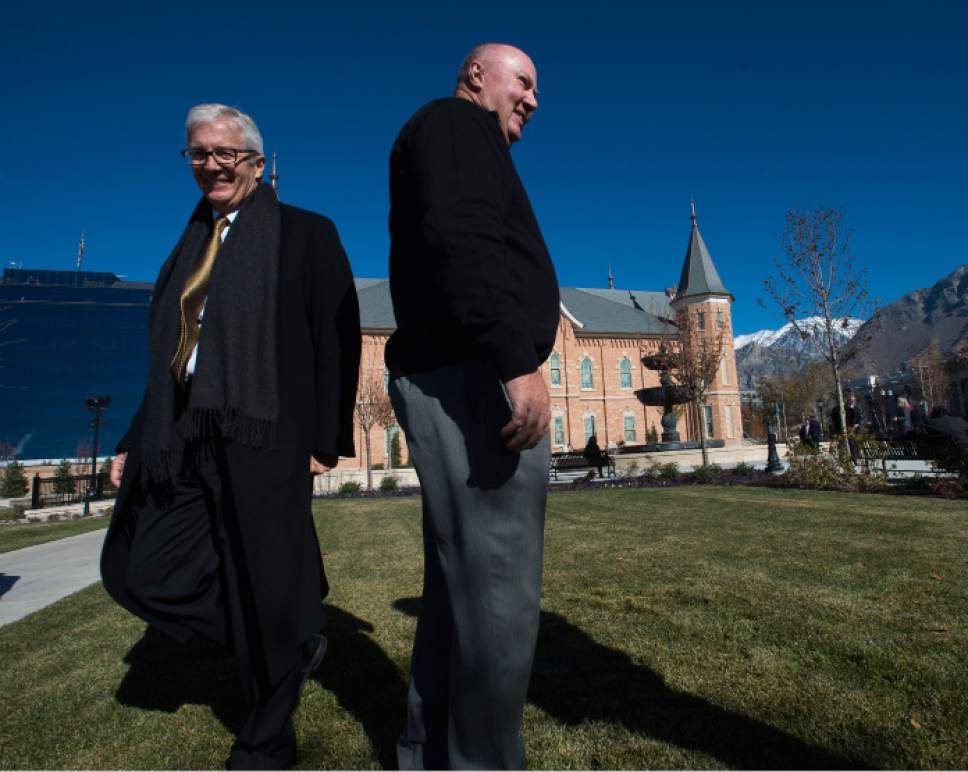This is an archived article that was published on sltrib.com in 2015, and information in the article may be outdated. It is provided only for personal research purposes and may not be reprinted.
Provo • The devastating fire of December 2010 left this Utah County community wondering whether The Church of Jesus Christ of Latter-day Saints' iconic Provo Tabernacle could be saved. But where passers-by saw rubble, architect Roger Jackson saw a call to action.
Standing on the grounds of the now nearly completed Provo City Center Temple, Jackson on Thursday recounted how, hoping to prove the Provo building could be similarly salvaged, he sent to LDS Church headquarters pictures of the hollowed-out shell of a historic tabernacle that was converted to the Vernal Temple in the 1990s,
"The day after the fire, like a lot of people, I was wringing my hands about another great old building lost," he said. "I felt like an ambulance-chaser a little, but I wrote a letter to people that I know in [the church special projects department] and said, you know, 'We did this same exact thing at the Uintah Stake Tabernacle that we turned into the Vernal Temple. We didn't use flames, but we did the same exact thing. … The Provo Tabernacle building can be saved.' "
LDS Church President Thomas Monson's 2011 announcement that the tabernacle was to be converted into a temple took most everyone by surprise — even Brent Roberts, who oversees the tabernacle as a director of special projects for the church.
Jackson said it was possible he was one of eight individuals who knew the church's First Presidency had even floated the idea.
With a Jan. 15 open house on the horizon, church officials gathered this week with the experts behind the renovation to share the story of the tabernacle's rebirth.
The finished result, Roberts said, is a "unique gem" even among temples.
The restoration called for innovative solutions to technical problems, as well as for an intense creative process. While the builder figured out how to reinforce the remaining walls and build a stilt-like structure to allow the excavation of the old foundation, Jackson and his team at FFKR Architects were tasked with converting the tabernacle — a large, open meeting hall — into an LDS temple, which has numerous small rooms and hallways.
Members of Jackson's creative team all had their own ideas about how this should be done, but Jackson said he wanted the end result to speak to the original building and its historic heritage.
"We didn't want it to be my voice, or really a contemporary voice," Jackson said. "We wanted to let the loudest voice be William Folsom, the [original] architect. So we tried to think, what would he have done, if he then was doing what we're doing now."
There were some original features the builders saved, such as part of the original pulpit. But for the most part, Jackson said, he and his team were left to study photographs to replicate details, such as the stained-glass upper windows, adorned with books and beehives.
For new elements they needed to add, Jackson said, they looked for inspiration in Folsom's other masterpieces, including the Manti Temple.
The most unique element they sought to restore, Jackson said, was the tabernacle's original central tower. The tower was removed in 1917, when the roof began to sag under the structure's weight — probably because the all-wood support system wasn't strong enough to support the spire. But modern technology made Folsom's original vision possible once again, Jackson said, and the creative team used computer modeling, together with their knowledge of the Victorian-Gothic style that had inspired Folsom, to create a close replica.
Gérald Caussé, presiding bishop of the LDS Church, said historical details like this have important cultural, and even spiritual, significance to members of the Mormon faith.
"When President Monson made that announcement, I think many people rejoiced at the thought that we could preserve the faith of the early people who lived here," he said, and that it could "continue to bless our lives through the legacy that is found in this temple. It is invaluable, the faith and the history … we want to preserve the memories that we have of those who came first to the valley. You cannot forget the spirit of those who in hardship and difficult times settled the area."
The Provo City Center Temple's public open house will run from Jan. 15 through March 5, except for Sundays. It will be dedicated on March 20, after which only Mormons who meet certain requirements may enter. Inside, they participate in the faith's most sacred rites, including eternal marriage.
Provo will become the second city in the world to have two LDS temples, preceded by South Jordan.
Twitter:@EmaPen




